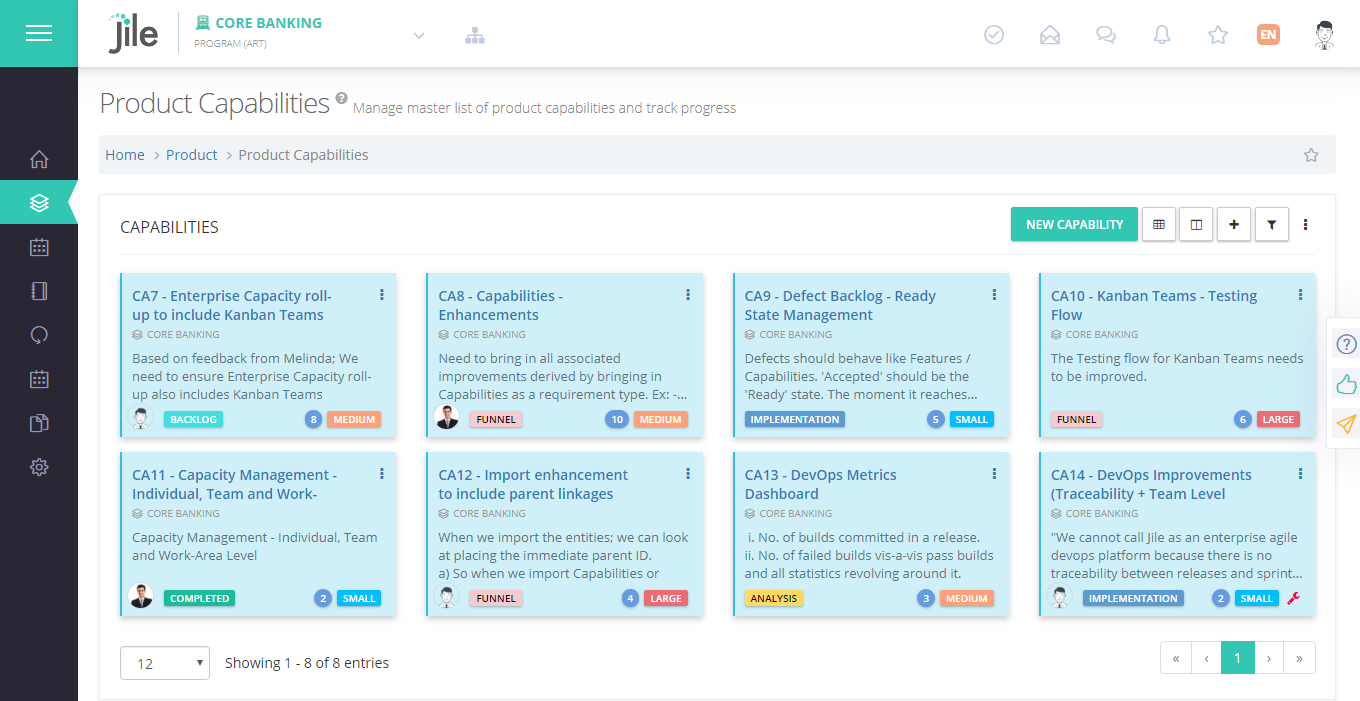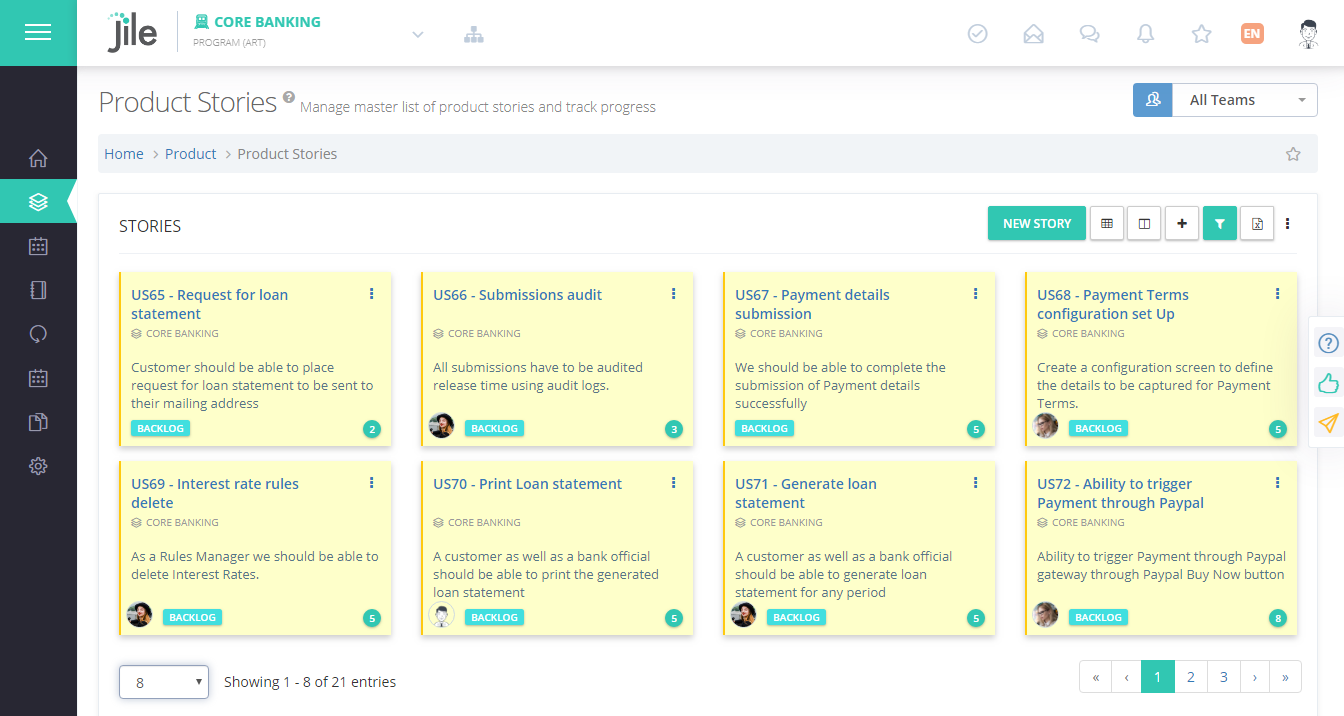Introduction
A Product is anything that can be offered to a market or to internal customers that might satisfy a want or a need. A software product can be a commodity like word processing, games or operating systems or channels to other physical products or services like online retail, mobile banking, claims processing etc.
A Product will have a consumer who uses the product, a buyer who pays for the product and sometimes both. Product provides value to both its consumers and the producer. A product can have one or more software systems or components associated with it. Products have a long life-cycle and evolve from an idea stage to development to implementation and finally retirement.
Product Teams
A team consists of people working intensively together to deliver value to the users and customers of their products. Agile teams are cross functional and have everything to produce a working, tested increment of the product. They follow a whole-team approach where everyone is responsible for the quality and success of the product.
In Jile a teams can either follow Scrum (Time-boxed) model or Kanban (Flow based) model for development. Scrum Teams plan and deliver work in iteration time-box. They have a predictable velocity ( amount of work measured in points that can be completed in an iteration ). Kanban teams use the kanban board to visualize and track the flow of work during the development process. Their work is measured in terms of throughput (amount of work delivered over a certain period of time)
A Product can have one or more teams tagged to it. In addition to these, a product or work-area could also have additional Key members associated with it. A Key Member is a person responsible for the success of the product but do not participate in development activities. They provide strategic guidance and management support required for the teams. Their capacity is not considered during estimation and planning processes.
Product Functions
Product Overview
Product Overview Function helps the teams to manage the high level summary and status of a product.
Product Capabilities
Product Capabilities Function helps the teams to manage the master list of all product capabilities.
- Capture information about a capability like title, description, benefits etc. Estimate the size of a capability using configurable units Rank the capability and create a prioritized list Breakdown capabilities into one or more features Manage the progress of a capability using configurable statuses View capabilities in different formats like cards, grids and boards
Product Features
Product Features Function helps the teams to manage the master list of all product features
- Capture information about a feature like title, description, benefits etc. Estimate the size of a feature using configurable units Rank the feature and create a prioritized list Breakdown features into one or more stories Manage the progress of a features using configurable statuses View features in different formats like cards, grids and boards
Product Stories
Product Stories Function helps the teams to manage the master list of all product stories
- Capture information about a sory like title, description, acceptance criteria etc. Estimate the size of a story using story points Rank stories and create a prioritized list Breakdown stories into one or more development tasks Manage the progress of a story using configurable statuses View stories in different formats like cards, grids and Boards
Files
Files Function helps the teams to manage a repository of product and team related documents.
Notes
Notes Function helps the teams to manage a repository of product and team related wiki pages.
Personas
Personas are fictional characters created to represent the users of your product. They help you to understand the users needs, challenges and goals and identify potential features or capabilities that help them achieve their goals or solve their challenges.
During the product discovery process product owners and product management teams identify the different types of personas and use them to derive the feature set. A Persona based discovery process helps the teams empathize with the users and to build systems which address the important needs of the end users.
Persona Functions
Personas
Personas Function helps the teams to identify and manage a set of product personas.
Persona Attributes
| Photo | Persona's Photograph |
| Role | The functional Role which the persona is playing |
| Type | Personas can be of 3 types.
1. Primary - These are the primary users of the system. 2. Secondary - These are the secondary users of the system. 3. Stakeholder - Any other users who are affected by the system like administrators etc. |
| Motivations | Describes the motivations and the reasons why the persona wants to use the system |
| Goals | Describes what the persona wants to achieve by using the system |
| Challenges | Describes the challenges faced by the persona in achieving their goals |
| Workarea | The workarea the persona belongs to |
| Age | The age group the persona represents |
| Gender | Gender of the persona |
| Location | Location of the persona |
| Tags | Set of labels to group or categorize the related persona |
| Entity | DESCRIPTION |
| Capabilities | List of capabilities associated with the persona. |
| Features | List of features associated with the persona |
| Stories | List of stories associated with the persona |
Components
Components are software systems or applications or technical components that are built to realize a product. For E.g. a Consumer Banking Product can be implemented using a core banking software, an online banking portal and an mobile app. For software products like a word processor or a game software the component and the product may be one and the same.
Components Functions
Components
Components Function helps the teams to define and manage a set of software systems related to the product.
Component Versions
Component Versions Function helps the teams to manage the set of product and component release versions, status and release dates.
Component Attributes and Relationships
| ID | A Unique identifier with a 2 letter prefix and a sequence number in the form of CO###. (Note : Workspace Admin can customize the prefix ) |
| Title | Brief Title of the Component |
| Description | Detailed description of the component |
| Owner | Component Owner. (Only Key Members can be tagged as a component owner) |
| Tags | Set of labels to group or categorize the related components |
| Workarea | The workarea in which the component belongs to |
| Entity | DESCRIPTION |
| Capabilities | List of capabilities associated with the component |
| Features | List of features associated with the component |
| Stories | List of stories associated with the component |
| Versions | List of component versions |
Constraints
Constraints are non-functional requirements that restrict or enforce a certain design or implementation decisions on a product backlog item. Constraints could be a business constraint or a technology constraint.
There are multiple ways in which constraints can be managed. They can be documented as part of the acceptance criteria when elaborating stories and features. These constraints will be specific to each story or feature and forms part of the story / feature definition.
When a constraint is applicable to multiple stories or features it is advisable to manage them as independent items and later associated with one or more stories or features.
Tests can be defined to validate a constraint. These tests are automatically included in the iteration backlog when a story is planned into an iteration.
Constraints Functions
Constraints
Constraints Function helps the teams to identify and manage the non-functional requirements of the product.
Constraint Attributes and Relationships
| ID | A Unique identifier with a 2 letter prefix and a sequence number in the form of BC### for Business and TC### for technical constraints (Note : Workspace Admin can customize the prefix ) |
| Title | Brief title of the constraint |
| Description | Detailed Description of the constraint |
| Type | Constraints can be of 2 types.
1. Business - A Business constraint in the form of policy or rules 2. Technical - Technology constraints like performance, security and usability. |
| Owner | Owner of the constraint |
| Tags | Set of labels to group or categorize related constraints |
| Workarea | The workarea where the constraint belongs to |
| Entity | DESCRIPTION |
| Test | Set of tests to validate the constraints |
| Entity | DESCRIPTION |
| Objectives | The Objective or the goal this initiative addresses. |









